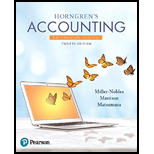
Concept explainers
Accounting for uncollectible accounts using the allowance (percent-of-sales) and direct write-off methods and reporting receivables on the
| Learning Objectives 1, 2, 3 1. Sep. 30 Bal. |
On August 31. 2018, Forget-Me-Not Floral Supply had a $140,000 debit balance in Accounts Receivable and a $5,600 credit balance in Allowance for
• Sales on account, $530,000. Ignore Cost of Goods Sold.
• Collections on account, $573,000.
• Write-offs of uncollectible receivables, $6,000.
Requirements
1. Journalize all September entries using the allowance method. Bad debts expense was estimated at 2% of credit sales. Show all September activity in Accounts Receivable, Allowance for Bad Debts, and Bad Debts Expense (post to these T-accounts).
2. Using the same facts, assume that Forget-Me-Not used the direct write-off method to account for uncollectible receivables. Journalize all September entries using the direct write-off method. Post to Accounts Receivable and Bad Debts Expense, and show their balances at September 30, 2018.
3. What amount of Bad Debts Expense would Forget-Me-Not report on its September income statement under each of the two methods? Which amount better matches expense with revenue? Give your reason.
4. What amount of net accounts receivable would Forget-Me-Not report on its September 30, 2018, balance sheet under each of the two methods? Which amount is more realistic? Give your reason.
Want to see the full answer?
Check out a sample textbook solution
Chapter 9 Solutions
Horngren's Accounting, The Financial Chapters (12th Edition)
- Module 6 Discussion Discuss the significance of recognizing the time value of money in the long-term impact of the capital budgeting decision. 60 Replies, 59 Unread Σarrow_forwardHow many weeks of supply does summit logistics Inc. Hold ?arrow_forwardI need some help with letter c. I have done the calculations correctly, but if there is anything wrong, please correct them.arrow_forward
- correct options is answer.arrow_forwardnone.arrow_forwardQuestion 3Footfall Manufacturing Ltd. reports the following financial information at the end of the current year: net sale $100 000 debtor's turnover ration (based on net sales) 2 inventory turnover ration 1.25 fixed assets turnover ratio 0.8 debt to assets ratio 0.6 net profit margin 5% gross profit margin 25% return on investment 2% Use the given information to fill out the templates for income statement and balance sheet given below: Income Statement of Footfall Manufacturing Ltd. for the year ending December 31, 20XX(in $) sales 100,000 cost of goods sold gross profit other expenses earnings before tax tax @50% earnings after tax Balance Sheet of Footfall Manufacturing Ltd. as at December 31, 20XX (in $) liabilities amount assets amount equity net fixed assets long term debt 50, 000 inventory short term debt debtors…arrow_forward
- Century 21 Accounting Multicolumn JournalAccountingISBN:9781337679503Author:GilbertsonPublisher:Cengage

